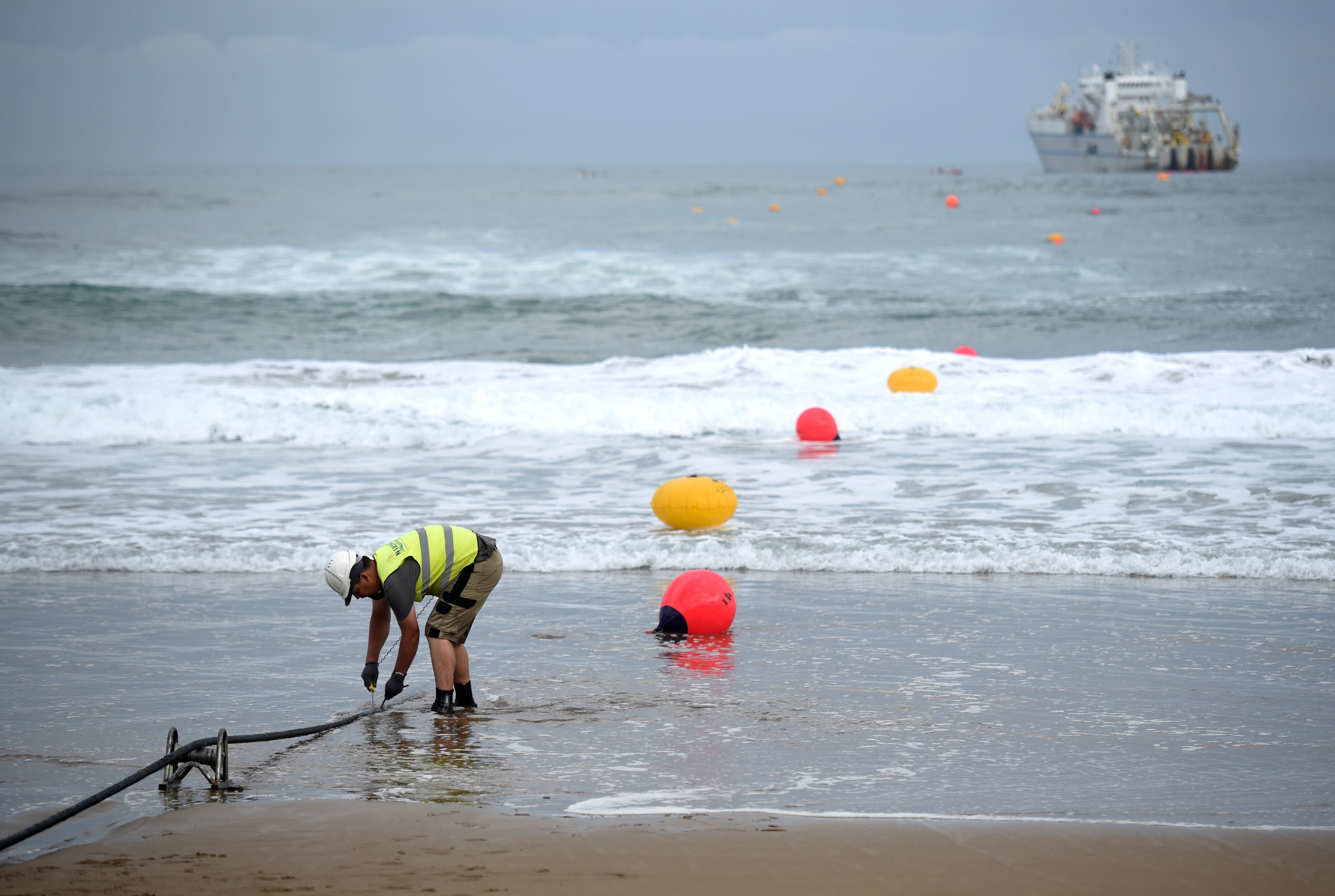ROME — As the builder of the U.S. Navy’s new Constellation frigates tries to ramp up schedules in Wisconsin, it is sending in the robots.
Seeking to shift up a gear and build two of the frigates every year at its Marinette Marine yard, faster than the current schedule of three every two years, shipbuilder Fincantieri says it is getting serious about automation.
“Welding is one of the skills it is hard to find, while the robot welding we plan to introduce triples productivity and increases quality,” said Pierroberto Folgiero, the CEO of the Italian company.
Fifteen years after buying Marinette Marine, Fincantieri is now building the first Constellation-class frigate for the US Navy with a planned completion date of 2026, part of an expected program of 20 vessels based on the FREMM frigate the firm has already built for the Italian navy.
In July Fincantieri unveiled MR4Weld, a tracked welding robot it developed with Italian firm Comau, which is active in the automotive industry. Equipped with a welding torch, the robot also has a video system which can autonomously identify welding joints or be told by a human operator where to weld.
“We are placing orders to start large-scale use of the robot in Italy and we want to export this as soon as possible to the US,” Folgiero told Defense News, adding, “that’s the big priority since we struggle to find welders in the U.S.”
He said, “The fact that Comau is part of the Stellantis group, which has operations in the U.S., should help.”
The robots are the latest tool Fincantieri hopes to use to accelerate production of the frigates.
“With the experience of the first of class being built now we have the objective of building two a year, up from the current contract which specifies three in two years,” Folgiero said.
That is faster than the rate of one FREMM frigate a year Fincantieri managed in Italy.
U.S. Navy officials have mulled exercising a contractual right to buy the frigate’s technical data package, or blueprints, from Fincantieri in order to qualify an additional shipyard to build the vessel, doubling annual production to four.
But Fincantieri said the Navy has yet to request the package.
The firm currently has a shortfall of 400 staff across its three Wisconsin yards which currently directly employ 2,100: Marinette Marine, Fincantieri Bay Shipbuilding in Sturgeon Bay and Fincantieri ACE Marine in Green Bay.
“We still have the problem of finding people, and, as importantly, retaining them with incentives,” said Folgiero.
The shortfall is an improvement on this time last year, though, when it stood at 1,000.
Since then around 400 blue-collar and 150 management staff have been hired.
Folgiero said the reduction in the staff shortfall was due in part to recruitment, but also due to increases in productivity already underway, starting with transferring assembly work from on board vessels to dry land.
“Doing more assembly of modules on land is boosting productivity and helping reduce the workforce required,” said Folgiero, who visited Marinette in December for the inauguration of a new painting building.
Sub-sea ambitions
Back in Italy, with ten naval vessels and two submarines under construction, not to mention cruise ships, Fincantieri has a substantial workload at its eight Italian yards, just as the firm ventures into sub-sea technology for the civil and naval sectors.
The Italian state-controlled firm is a partner at a new sub-sea center in La Spezia, Italy, which brings industry, the Italian navy and academia together to study a domain drawing attention since the attack on the Nord Stream pipeline in the Baltic last year.
Fincantieri, which predicts military sub-sea spending will total € 94 billion ($103 billion) between 2024 and 2030, also signed a deal with fellow Italian defense giant Leonardo in November to work on drones to protect undersea cables and pipelines.
RELATED

In December it purchased Italian firm Remazel, which manages sub-sea operations for the oil and gas sector as well as offshore wind power and launch and recovery systems for sub-sea mining robots.
Also in December, Fincantieri signed an agreement to work with W-Sense, an Italian start-up using Norwegian technology to develop underwater communications based on acoustic and optical signals.
“We will be an integrator, deciding whether to make or buy systems,” said Folgiero when asked about Fincantieri’s sub-sea ambitions. “There are drones out there, they are not difficult to find, although we could build larger unmanned drones of nine meters,” he said.
“We are following the new sub-sea naval doctrine in which a mother ship is a center for command and control and communications, interacting with submarines and drones measuring three or nine meters,” he added.
Folgiero said the harnessing of oil and gas technology for sub-sea defense needs was typical of Fincantieri’s cross-over work between the civil and defense sectors, just as it has used techniques from building cruise ships to improve naval vessels.
“We were born for this,” he said.
Tom Kington is the Italy correspondent for Defense News.








